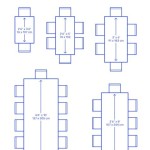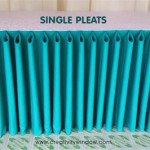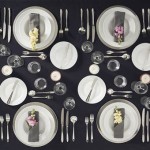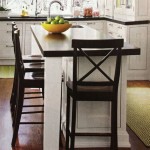Ottoman Coffee Table Tray: A Detailed Overview
The Ottoman coffee table tray is a versatile and functional accessory, blending aesthetic appeal with practical utility. Its design often draws inspiration from traditional Ottoman motifs, characterized by intricate patterns, ornate detailing, and a generally luxurious feel. This article aims to provide a comprehensive overview of the Ottoman coffee table tray, exploring its various types, materials, design elements, functionality, and considerations for selection and care.
An Ottoman coffee table, typically a large, cushioned surface, serves as a central gathering point in a living room. While comfortable for lounging and relaxing, it often lacks a stable surface for placing drinks, snacks, books, or decorative items. The tray addresses this limitation, providing a flat, elevated area for holding these items securely. The combination of an Ottoman and a tray creates a multifunctional piece of furniture, enhancing both comfort and convenience.
The historical roots of Ottoman design heavily influence the aesthetics of these trays. The Ottoman Empire, known for its rich artistic heritage, incorporated elements of Islamic art, Byzantine influences, and Persian motifs into its crafts. Floral patterns, geometric shapes, calligraphy, and stylized animal figures are frequently observed in Ottoman designs. These elements are often translated into the intricate detailing found on Ottoman coffee table trays, contributing to their distinctive and elegant appearance.
Beyond its functional purpose, the Ottoman coffee table tray also serves as a decorative accent. Its presence can elevate the overall aesthetic of a living room, adding a touch of sophistication and cultural richness. The tray acts as a focal point, drawing the eye and enhancing the visual appeal of the coffee table. The choice of material, finish, and design significantly impacts its decorative effect, allowing it to complement or contrast with the existing décor.
Materials Used in Ottoman Coffee Table Trays
The choice of material is a crucial factor in determining the durability, appearance, and overall quality of an Ottoman coffee table tray. A wide range of materials are employed, each offering unique characteristics and aesthetic qualities. Common materials include:
Metal: Metal trays are known for their durability and resistance to damage. Brass, copper, silver, and wrought iron are popular choices. Brass and copper trays often feature intricate engravings and embossed details, reflecting the historical Ottoman craftsmanship. Silver trays, while more expensive, offer a luxurious and elegant appearance. Wrought iron trays provide a rustic and sturdy option. Metal trays can be further enhanced with finishes such as polishing, antiquing, or powder coating for added protection and visual appeal.
Wood: Wooden trays offer a warm and natural aesthetic. Hardwoods such as walnut, oak, and mahogany are commonly used for their durability and rich grain patterns. Softwoods like pine can also be used, often finished with stains or paints to enhance their appearance. Wooden trays may feature carved details, inlaid patterns, or decorative handles. The choice of wood and finish significantly impacts the overall style of the tray, ranging from traditional to contemporary.
Glass: Glass trays provide a sleek and modern aesthetic. Tempered glass is preferred for its strength and safety. Glass trays may be transparent, frosted, or colored. They can be combined with metal or wooden frames for added support and visual contrast. Glass trays are relatively easy to clean and maintain, making them a practical choice for everyday use. However, they are more susceptible to scratches and breakage compared to metal or wooden trays.
Ceramic/Porcelain: Ceramic or porcelain trays offer a delicate and refined appearance. These trays are often hand-painted with intricate patterns and vibrant colors, reflecting the artistry of Ottoman design. Ceramic and porcelain trays are relatively fragile and require careful handling. They are often used for serving tea or coffee, adding a touch of elegance to the experience.
Acrylic: Acrylic trays provide a modern and lightweight option. Acrylic is a durable and shatter-resistant plastic that can be molded into various shapes and colors. Acrylic trays are easy to clean and maintain, making them a practical choice for everyday use. They are often transparent or colored, allowing them to complement a wide range of décor styles.
Design Elements and Styles
The design of an Ottoman coffee table tray is characterized by a range of decorative elements and stylistic influences. These elements contribute to the overall aesthetic appeal of the tray, reflecting the rich cultural heritage of the Ottoman Empire. Key design elements and styles include:
Intricate Patterns: Ottoman designs are known for their intricate and detailed patterns. Floral motifs, geometric shapes, and calligraphic inscriptions are commonly employed. These patterns are often hand-painted, engraved, or inlaid onto the tray surface, showcasing the skill and artistry of the craftsman. The complexity and detail of the patterns contribute to the luxurious and elegant appearance of the tray.
Ornate Detailing: Ornate detailing is another hallmark of Ottoman design. This includes features such as raised edges, decorative handles, and embellished corners. These details add visual interest and enhance the overall aesthetic appeal of the tray. The use of precious metals, such as gold or silver plating, can further enhance the ornate detailing, creating a luxurious and opulent appearance.
Calligraphy: Calligraphy, the art of beautiful handwriting, is a significant aspect of Islamic art and is often incorporated into Ottoman designs. Calligraphic inscriptions, typically verses from the Quran or poetic expressions, are carefully rendered onto the tray surface. These inscriptions add a spiritual and cultural dimension to the tray, reflecting the religious and intellectual heritage of the Ottoman Empire.
Color Palettes: Traditional Ottoman designs often feature rich and vibrant color palettes. Deep reds, blues, greens, and golds are commonly used, reflecting the opulence and grandeur of the Ottoman court. These colors are often combined to create striking contrasts and visual interest. Modern interpretations of Ottoman design may incorporate more subdued color palettes, such as muted pastels or neutral tones, to suit contemporary décor styles.
Handle Design: The design of the handles is an important aspect of the overall aesthetic and functionality of the tray. Handles can be made from a variety of materials, including metal, wood, or leather. They can be simple and minimalist or ornate and decorative. The size, shape, and placement of the handles should be carefully considered to ensure comfortable and secure handling of the tray.
Functionality and Practical Considerations
Beyond its aesthetic appeal, the Ottoman coffee table tray serves a practical function in providing a stable and convenient surface for various items. Several factors contribute to the functionality and practicality of the tray:
Size and Shape: The size and shape of the tray should be appropriate for the size of the Ottoman coffee table and the intended use. A large tray can accommodate multiple items, while a smaller tray may be more suitable for holding a few essential items. The shape of the tray can also impact its functionality. Rectangular trays are generally more versatile, while round or oval trays may be more decorative.
Weight Capacity: The weight capacity of the tray is an important consideration, especially if it will be used to hold heavy items such as books or serving dishes. The material and construction of the tray determine its weight capacity. Metal and hardwood trays typically offer higher weight capacities compared to glass or acrylic trays.
Stability and Balance: The tray should be stable and balanced to prevent items from tipping over. A sturdy base and well-designed handles contribute to the stability of the tray. The tray should also be placed on a level surface to ensure proper balance.
Ease of Cleaning: The tray should be easy to clean and maintain. Different materials require different cleaning methods. Metal trays can be cleaned with a damp cloth and mild detergent. Wooden trays should be cleaned with a soft cloth and wood cleaner. Glass trays can be cleaned with glass cleaner. Ceramic and porcelain trays should be hand-washed with mild soap. Acrylic trays can be cleaned with a soft cloth and acrylic cleaner.
Storage: When not in use, the tray should be easy to store. Some trays are designed to be collapsible or stackable for convenient storage. The storage space available should be considered when selecting a tray.
Safety Features: The tray should be designed with safety in mind. Sharp edges or protruding elements should be avoided. Handles should be designed to provide a secure grip. Glass trays should be made of tempered glass to prevent shattering. The tray should be placed out of reach of children or pets to prevent accidents.
Selecting the right Ottoman coffee table tray involves considering its material, design, functionality, and maintenance requirements. By carefully evaluating these factors, one can choose a tray that enhances the aesthetic appeal and practicality of the living room while reflecting personal style and preferences.

Ottoman Tray Oversized Coffee Table Tea

Over Ottoman Cocktail Table Or Tray In Walnut Denmark

Cavendish Ottoman Coffee Table Tray Material Solid Wood Finish Brown Com

Épinglé Sur Basement

Ottoman Sled Coffee Table Tray Free

Over Ottoman Cocktail Table Or Tray In Walnut Oversized Wood Columbusfurnitureco

Large Oak Or Cedar Ottoman Serving Tray Coffee Table Decor

Ottoman Coffee Table With Recessed Tray Transitional Living Room

Easy Ottoman Tray Styling Tips And Ideas That Really Work

Handmade Oak Ottoman Tray Wooden Serving Footstool Denmark
Related Posts








